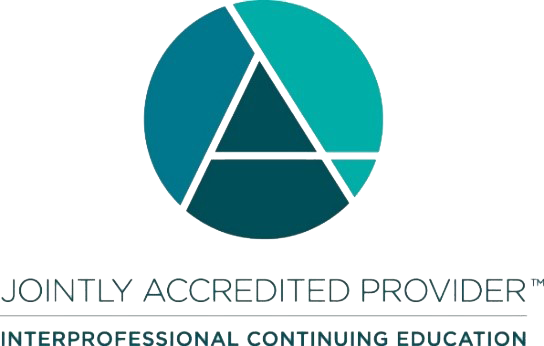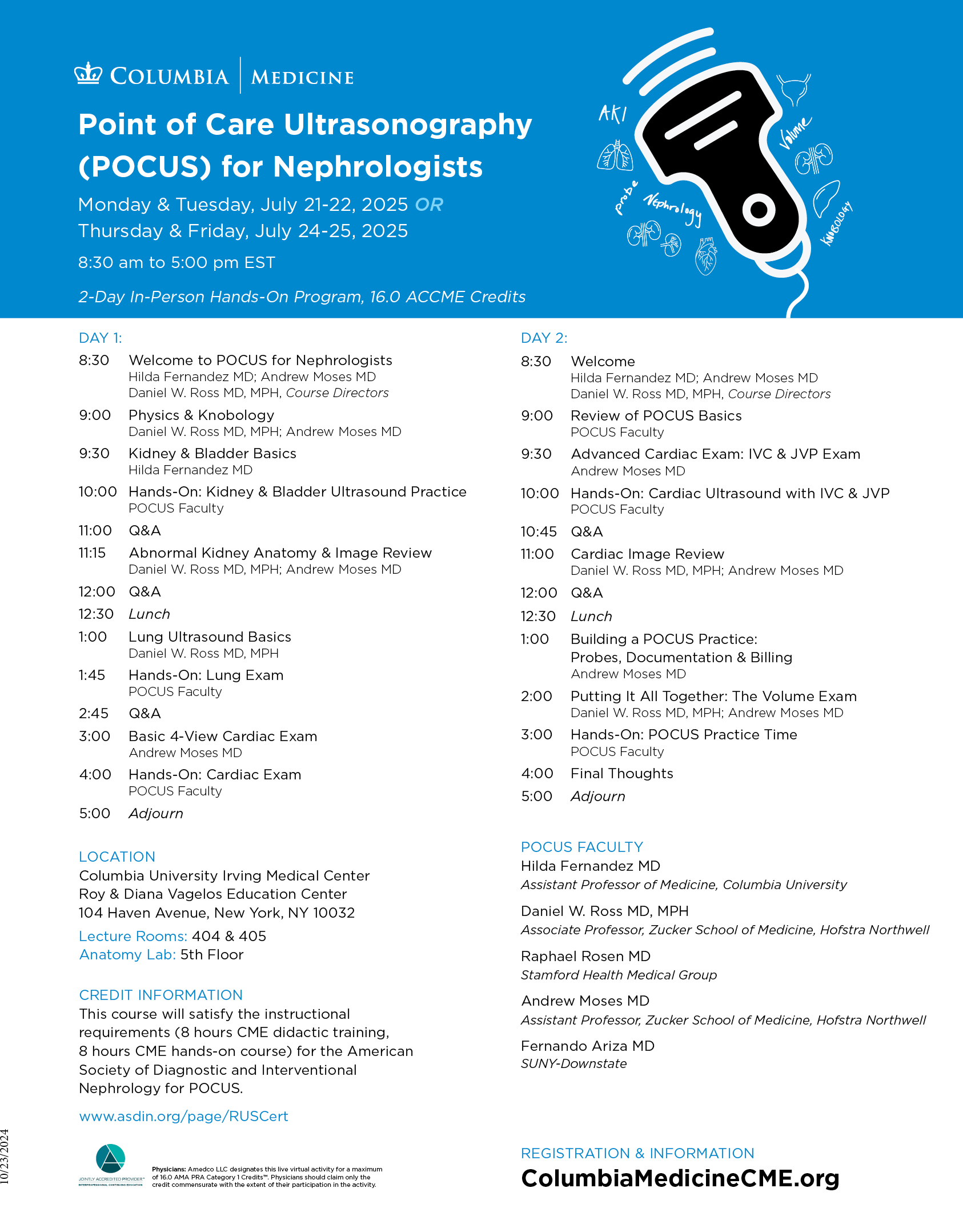Program Overview
2-DAY IN-PERSON, HANDS-ON PROGRAM
Available Dates
Monday & Tuesday, July 21 & 22, 2025
or
Thursday & Friday, July 24 & 25, 2025
Advances in the use of ultrasonography enhance our ability to better characterize acute kidney injury (AKI) and volume assessment in critically ill patients. The initial approach to AKI differentiates between pre-renal, intrinsic, and post-renal/obstructive AKI. Pre-renal AKI results from decreased perfusion of the kidney parenchyma. Intrinsic AKI is an insult that progresses to damage of the kidney tubules and/or direct damage to the nephron itself. Post-renal AKI develops from blockage after the kidney collecting system, such as nephrolithiasis, malignancy compressing a ureter, or prostatic hypertrophy. Pre-renal and post-renal injuries can be reversible, but prolonged injury may develop into intrinsic AKI. The rapid diagnosis of pre- and post-renal obstruction can lead to reversal; ultrasonography through high quality imaging is therefore critical for clinical care, and identification of chronic kidney disease (CKD). Assessment of volume status is an essential component to the care of both the critically ill patient and the care of patient with heart and renal failure. Volume resuscitation management is guided by often inaccurate methods, leading to delays in care management decisions. While volume depletion and decreased cardiac output lead to end organ damage and increased morbidity and mortality, so too does fluid overload lead to pulmonary edema and respiratory failure, heart failure, AKI, hepatic congestion, tissue breakdown and impaired bowel function. POCUS offers additional methods of volume assessment through lung imaging to evaluate for interstitial edema and pleural effusions. A focused cardiac evaluation with POCUS can also be helpful for non-cardiologist physicians in identifying left ventricular dysfunction, valvular dysfunction and pericardial effusions. Point of Care Ultrasound (POCUS) enhances ability to characterize acute kidney injury and volume assessment in critically ill patients. Challenges to POCUS training for nephrologists include: relatively new use of POCUS, physicians lack POCUS training, and lack of POCUS in graduate medical education. Our objective is to train nephrologists utilizing a 2-day curriculum that satisfies POCUS certification through the American Society of Diagnostic and Interventional Nephrology.
Learning Objectives
1. Point
of care Ultrasound targets acute kidney injury and volume assessment in
critically ill patients through POCUS.
2. Identify
and train nephrologists utilizing a 2-day curriculum that satisfies POCUS
certification through the American Society of Diagnostic and Interventional
Nephrology.
3. Discuss
and train the uses of POCUS with physicians and graduate medical education
students who lack POCUS training.
Joint Accreditation Statement
In
support of improving patient care, this activity has been planned and
implemented by Amedco LLC and Columbia University. Amedco LLC is jointly
accredited by the Accreditation Council for Continuing Medical
Education (ACCME), the Accreditation Council for Pharmacy Education
(ACPE), and the American Nurses Credentialing Center (ANCC), to provide
continuing education for the healthcare team.
Amedco Joint
Accreditation Provider Number #4008163.

Physicians
Amedco LLC designates this live activity for a maximum of 16.0 AMA PRA Category 1 Credits™ for physicians. Physicians should claim only the credit commensurate with the extent of their participation in the activity.
Nurse
Practitioners
The
American Association of Nurse Practitioners (AANP)
recognizes the Accreditation Council for Continuing Medical Education
(ACCME) and the American Nurses Credentialing Center (ANCC) as approved
accreditors and allow reciprocity for AANPCP continuing education credit.
Physician Assistants
The National Commission on Certification of Physician Assistant (NCCPA) states that AMA PRA Category 1 Credit™ are acceptable for continuing medical education requirements for recertification for PAs. Amedco LLC designates this live activity for a maximum of 16.00 AMA PRA Category 1 Credit™. PAs should claim only the credit commensurate with the extent of their participation in the activity.
Credit Information
This
course will satisfy the instructional requirements (8 hours CME
didactic training, 8 hours CME hands-on course) for the American Society
of Diagnostic and Interventional Nephrology for POCUS.
Please refer to the POCUS application on the ASDIN website for details https://www.asdin.org/page/RUSCert
Note
No refunds from July 1, 2025.
Registration Fees
Registration Options
Monday & Tuesday, July 21-22, 2025
1,800.00 USD
Thursday & Friday, July 24-25, 2025
1,800.00 USD




